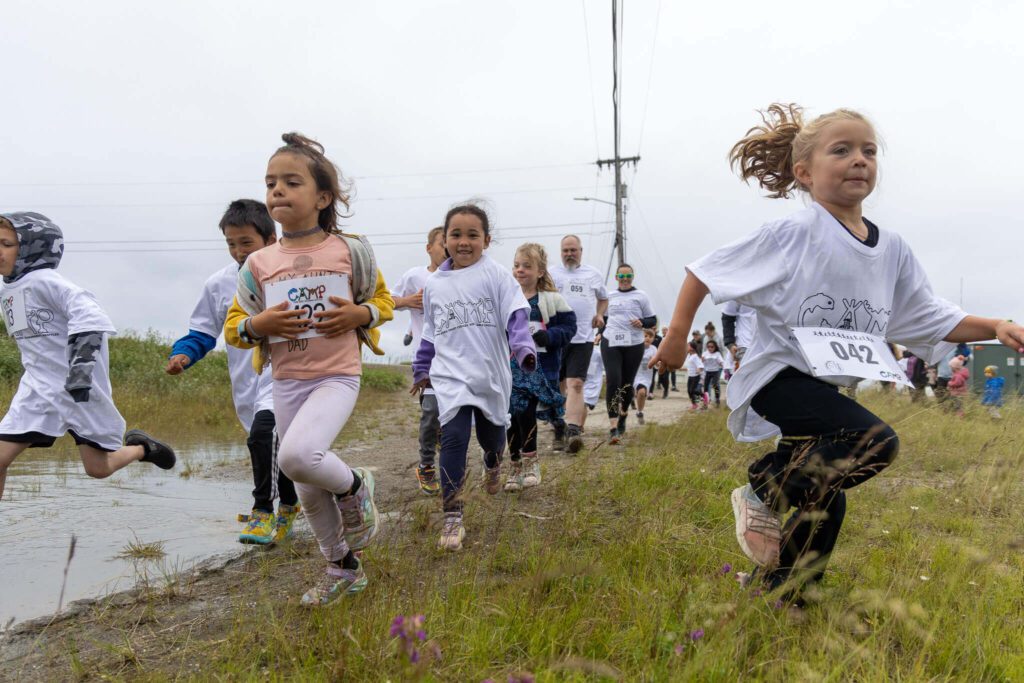Looking to gauge the impact of what an increase in its ships and mariners could mean for the arctic environment, the Coast Guard kicked off a series of meetings across the state in Nome Monday.
Poor weather kept those drafting the environmental assessment of arctic operations from delivering their presentation in person, but liaisons for the maritime agency led residents through a teleconference on just what the Coast Guard expects its environmental impact will be as it ramps up arctic operations in the years to come.
“Most of our activities are going to be based on ships and aircraft that come in and out of the area seasonally,” said Jamie Robinson, a former guardsman now working as a civilian arctic planner.
“We are going to work on a resource-neutral model for moving further north as human activity increases,” he added.
Robinson said that “resource-neutral” model means a focus on using ships and planes—and not building new structures on land—for the guard’s arctic operations.
The draft assessment concludes that such an approach will have “no significant adverse impacts” on arctic biology, ecology, and more. The Coast Guard backs up that claim with a look at potential shore operations in Barrow, Nome, and Kotzebue; maps of habitat for bird, fish, and both land and marine mammals; and a list of tribes and tribal organizations the Coast Guard said it has worked with in past summer training exercises.
But some Nome residents at the meeting took the Coast Guard to task for focusing too heavily on the North Slope, and offering little in the way of input or engagement from the Norton Sound and Bering Strait region.

“The biological and also logistical (work in the draft) is very specific to the North Slope borough,” said Gay Sheffield, with the University of Alaska-Fairbanks Marine Advisory Program in Nome. “As a citizen of Bering Strait region, though we share similar species and activities, we do have very big regional differences and timings.”
Coast Guard-provided maps in the assessment reflected that North Slope focus, labeling larger communities like Nome and Kotzebue but omitting virtually all villages in the Norton Sound, along the Bering Strait, and the St. Lawrence and Diomede islands.
“The final plan is really going to impact our communities, so I urge you to go out there and get input from subsistence resource users,” Vera Metcalf with the Eskimo Walrus Commission told presenters.
Kawerak’s Rose Fosdick pushed for more local engagement in the waters just below the Arctic Circle.
“I hope that you will be able to gather information, the local knowledge, in regard to things like of areas to be avoided,” she said.
She added that it’s the Bering Strait that will see the traffic into American Arctic waters, with any environmental repercussions falling on those who live there.
“People in our communities know that they will be the first to respond to anything that happens,” Fosdick said, “because they will not just sit on the beach and watch something happen.”
Robinson said the Coast Guard’s North Slope focus is a product of Barrow-based training over the past few seasons. He said feedback about engagement and subsistence is what the maritime agency hopes to get from the meetings, in order to draft a plan that covers all corners of the arctic.
“A commitment to the people of the whole arctic, not the least of which is the Bering Straits region, is there,” he reiterated.
Other Arctic concerns, like the question of Russian relations across the Strait, and how the Coast Guard would deal with potential maritime disasters like an arctic oil spill, remained unanswered at Monday’s meeting.
For its part, Robinson said the Coast Guard thinks action in the arctic will ultimately drive those policies.
“We are learning more about Bering Strait region and applying that to the risks that seem to present, which may be more shipping traffic related (such as) collisions and groundings,” he said. “That will drive our presence and more of our activity in that area.”
Robinson said the Coast Guard’s arctic oil spill response plan is the focus of a different assessment currently in the works, but when that project would be completed he would not say.







